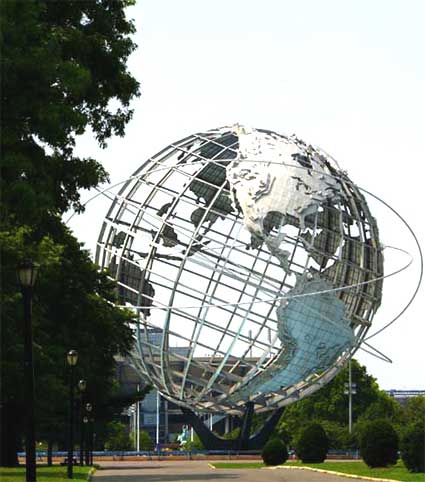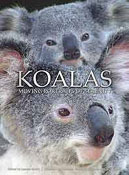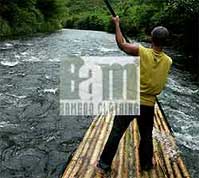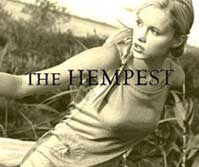Olympian hopeful part II
Second in a 2 part series "Urban habitat; Olympian hopeful"
David Oats is the Chairman of the Queens Olympic Committee. He received the announcement of the so-called Plan B Olympic bid, which sprung from the collapse of a stadium proposal for the West Side of Manhattan in early summer, with equal parts vindication and exasperation.
"The West Side stadium was a monstrosity," says Oats, who tussled with Mayor Michael Bloomberg and his administration for three years over where the Olympic Stadium should be located. "Nobody wanted that stadium. The IOC (International Olympic Committee) came to town in early 2005 and saw that the city was in disarray. Luckily, they asked to see our plan."
New York City wound up in fourth place after London, the winner of the 2012 summer games, Paris and Moscow. Many pin New York's loss on the energy poured into-- and wasted on, say critics—Bloomberg’s West Side stadium plan. Residents of the neighborhood objected to the massive influx of traffic that would result. Citywide, taxpayers rejected its billion-dollar price tag. But the stadium, which would have also served as home field for the National Football League Jets, remained Plan A almost up to the IOC's final decision.
"Arrogance, real-estate deals and incompetence destroyed New York's bid in the end," says Oats. "Queens was the original Olympics site spec’d out in the late-'70s and presented in 1984. New York lost by one vote that year. Flushing Meadows has the space, some of the sites already built and the perfect symbol for the games in the Unisphere." The Unisphere was erected for the 1964 World's Fair.

Oats responds with incredulity to lower perceptions of Queens and its parks. "Jets' executives said they wouldn't be able to sell luxury box seats," he says. "I told them tennis is one of the classiest sports in the world, and the USTA (United States Tennis Association) sells out Arthur Ashe Stadium every year."
Oats wants the Olympic games at Flushing Meadows in 11 years, but he agrees with Dolan that Meadow and Willow Lakes should remain untouched. "Willow Lake was supposed to develop as a wildlife preserve," he says. "I'm opposed to changing the lakes. There are other sites for rowing. If the plan to change them goes ahead, it will turn into the next West Side stadium. It will be a fight."
One key piece of the 2016 bid will be in place well before bidding for those games begins: a new stadium for Major League Baseball's Mets. The new ballpark, which could be expanded into the Olympic stadium, will be built in the parking lot adjacent to Shea Stadium following its pending demolition.
The Mets' new field will graze the edge of Willits Point and the Iron Triangle-- a bustling sprawl of chrome and rust from dozens of auto body shops and junkyards. Real estate developers have tried to renovate the area, but the Triangle’s business owners have stood in the way with demands the city pay for their relocation. Where hotels or shopping malls failed to change minds, the Olympic games, again, might succeed.
"Willits Point can be developed," says Oats. "The 7 train, the Long Island Railroad, major highways, an airport and a marina are all right there. We're going to push for Willits Point to be the site of the Olympic Village."
Construction has already begun on an aquatic center located at the mouth of the park in the north. The center will be used as a pool in the summer and a skating rink in the winter. It won’t host Olympic sports in 2012, but it can only strengthen Oats' argument for a Queens Olympics the next time around. In the meantime, the facility will be one more place for park-goers to stretch their legs and have fun.
"London will spend over a billion dollars for the [Olympic] games," says Oats. "Flushing Meadows is almost complete."
By Gregory Yanick - New York
Greener Magazine Staff Writer
View photos
David Oats is the Chairman of the Queens Olympic Committee. He received the announcement of the so-called Plan B Olympic bid, which sprung from the collapse of a stadium proposal for the West Side of Manhattan in early summer, with equal parts vindication and exasperation.
"The West Side stadium was a monstrosity," says Oats, who tussled with Mayor Michael Bloomberg and his administration for three years over where the Olympic Stadium should be located. "Nobody wanted that stadium. The IOC (International Olympic Committee) came to town in early 2005 and saw that the city was in disarray. Luckily, they asked to see our plan."
New York City wound up in fourth place after London, the winner of the 2012 summer games, Paris and Moscow. Many pin New York's loss on the energy poured into-- and wasted on, say critics—Bloomberg’s West Side stadium plan. Residents of the neighborhood objected to the massive influx of traffic that would result. Citywide, taxpayers rejected its billion-dollar price tag. But the stadium, which would have also served as home field for the National Football League Jets, remained Plan A almost up to the IOC's final decision.
"Arrogance, real-estate deals and incompetence destroyed New York's bid in the end," says Oats. "Queens was the original Olympics site spec’d out in the late-'70s and presented in 1984. New York lost by one vote that year. Flushing Meadows has the space, some of the sites already built and the perfect symbol for the games in the Unisphere." The Unisphere was erected for the 1964 World's Fair.

Oats responds with incredulity to lower perceptions of Queens and its parks. "Jets' executives said they wouldn't be able to sell luxury box seats," he says. "I told them tennis is one of the classiest sports in the world, and the USTA (United States Tennis Association) sells out Arthur Ashe Stadium every year."
Oats wants the Olympic games at Flushing Meadows in 11 years, but he agrees with Dolan that Meadow and Willow Lakes should remain untouched. "Willow Lake was supposed to develop as a wildlife preserve," he says. "I'm opposed to changing the lakes. There are other sites for rowing. If the plan to change them goes ahead, it will turn into the next West Side stadium. It will be a fight."
One key piece of the 2016 bid will be in place well before bidding for those games begins: a new stadium for Major League Baseball's Mets. The new ballpark, which could be expanded into the Olympic stadium, will be built in the parking lot adjacent to Shea Stadium following its pending demolition.
The Mets' new field will graze the edge of Willits Point and the Iron Triangle-- a bustling sprawl of chrome and rust from dozens of auto body shops and junkyards. Real estate developers have tried to renovate the area, but the Triangle’s business owners have stood in the way with demands the city pay for their relocation. Where hotels or shopping malls failed to change minds, the Olympic games, again, might succeed.
"Willits Point can be developed," says Oats. "The 7 train, the Long Island Railroad, major highways, an airport and a marina are all right there. We're going to push for Willits Point to be the site of the Olympic Village."
Construction has already begun on an aquatic center located at the mouth of the park in the north. The center will be used as a pool in the summer and a skating rink in the winter. It won’t host Olympic sports in 2012, but it can only strengthen Oats' argument for a Queens Olympics the next time around. In the meantime, the facility will be one more place for park-goers to stretch their legs and have fun.
"London will spend over a billion dollars for the [Olympic] games," says Oats. "Flushing Meadows is almost complete."
By Gregory Yanick - New York
Greener Magazine Staff Writer
View photos



9:22 AM









<< Home